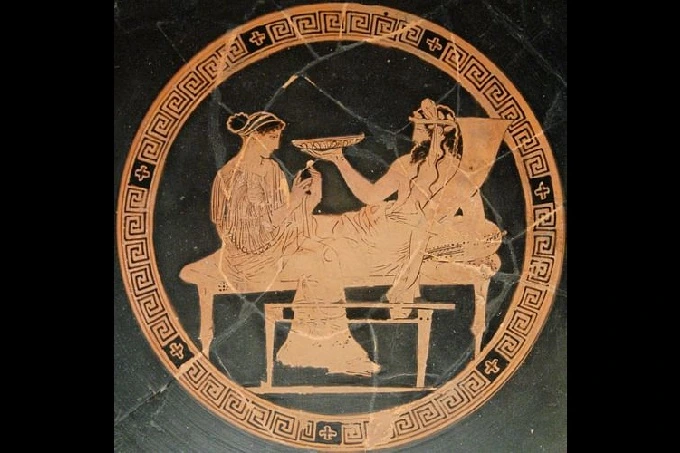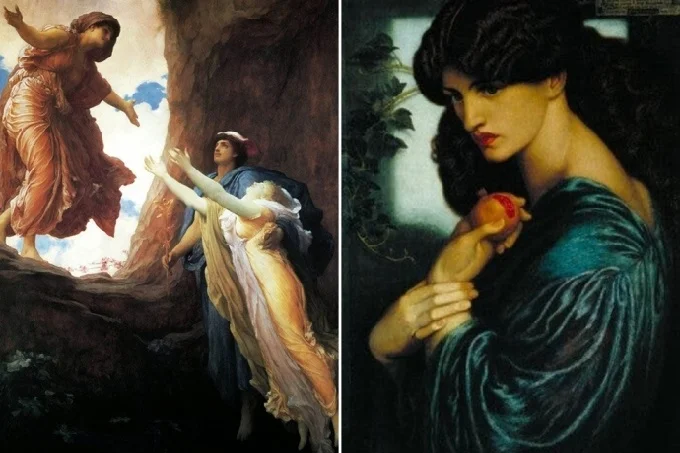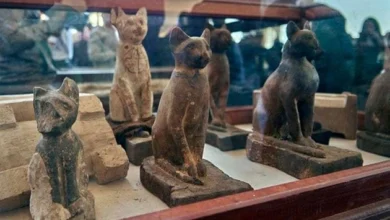What join goddess of fertility Persephone and king of the underworld Hades

The story of Persephone and Hades is one of the most famous in Greek mythology: Persephone, the Greek goddess of spring and fertility, married Hades, the king of the underworld but did she love Hades? Their story is far from a traditional love story, and over the years, their relationship has gone through various twists and turns.
Persephone was born to the Greek gods Zeus and Demeter. Demeter was most often considered the goddess of the harvest, and in this role, she oversaw the fertility of the earth. She also served as the goddess of agriculture, fertility, the cycle of life, sacred law, and death. Soon she gave birth to her daughter Persephone. Unlike many other Greek gods and goddesses, Demeter was not mentioned very often by Homer, but his legend of Persephone was quite ancient.
Persephone is best known today by her Greek name, meaning “Destruction Bringer”, but she was also known by many other nicknames and titles in Greek and Roman mythology. She was originally known as “The Maiden”, indicating her definite status as a virgin and her role as the Goddess of Spring. In Roman mythology, she is known as Proserpina or the Empress of the Erinyes, otherwise known as the Three Furies: Allecto, Megaera, and Tisiphone.
Persephone is known for serving as the Goddess of Spring, but she also played many other important roles in Greek mythology. Like her mother Demeter, Persephone was an agricultural goddess who ruled over crops and vegetation.

However, in addition to acting in her individual role as one of the Olympian Gods, she also ruled the Underworld alongside Hades. In the Underworld, Persephone was something of a protector who helped various legendary heroes who ended up in the kingdom of Hades.
The relationship between Hades and Persephone mirrors that of Zeus with Hera. Each pair was powerful in its own right and also influenced Greek mythology in different ways. Zeus and Hades were juxtaposed as the “Upper World” lords, otherwise known as the heavens or Mount Olympus, while Hades ruled the underworld. Each god tricked the woman he liked into marriage in one way or another.
Zeus and Hera constantly fought each other in all mythologies, while Hades and Persephone were always marked by a happy life together. While Hera was known to act against her husband’s various lovers, causing their death or punishing them in various inventive ways, Persephone only acted against Hades to save the lives of people who entered the underworld, furthermore, she was able to use her strength not only to save others but also to support her husband in the process. Not many other gods or goddesses were capable of such feats.
Despite the fact that Persephone was a virgin goddess whom her mother jealously protected for a long time, she eventually had two children: a daughter named Melinoe and a son named Zagreus. Melinoe was the goddess of ghosts and spirits. She was said to bring nightmares to those she visited. Most ancient sources claimed that Persephone and Hades conceived her. However, some stories claimed that it was created after Zeus, disguised as Hades, visited Persephone.
Zagreus, or the “Great Hunter”, was the god of the Orphic mysteries. His birth was the result of a tryst between the goddess Persephone and Zeus when the god disguised himself as a serpent and seduced the queen of the underworld. As soon as he was born, Zeus placed Zagreus on the heavenly throne and gave the child his lightning bolts, unaware that the Titans would deceive and dismember the boy as soon as Hera turned them against him. Zeus saved the child’s heart and turned it into a potion that Semele drank, thereby conceiving Dionysus.
Because she was the Goddess of Spring, Persephone was often associated with many spring-themed symbols. Wreaths of flowers, reeds, lilies, and precious stones were all associated with her in various forms. Any form of vegetation, animal, or even scent representing new life was associated with Persephone in one way or another because it was only after her return to earth that life could continue every year.
Her two most notable symbols were pomegranates and the narcissus flower due to their close association with the origin story of Hades and Persephone’s relationship. However, the asphodel, or Asphodelus, also played a key role in the symbolism of Persephone.
Asphodelus is a type of flower that grows throughout Europe and the Middle East, although it can be found elsewhere. It was associated with Persephone because, in Greek mythology, it was the flower of the dead and the underworld. Persephone is depicted wearing a garland of asphodels as a sign of life in death in many images.
Persephone was a figure without parallel in Greek mythology. Her power extended to places few other gods could ever reach, and her love story with Hades lives on as one of the most memorable mythological legends.
Meeting with Hades
Persephone and Hades met under interesting circumstances. Hades was deeply alone in his vast underground castle and yearned for a life partner to keep him company. While visiting the upper world, he noticed the young and beautiful Persephone picking flowers in the meadow, and was immediately fascinated by her. Then Hades lured Persephone by cunning and, having caught her, dragged her into the underworld with him. Ancient Greek and Roman texts clearly state that Hades kidnapped Persephone against her will and forcibly made her his wife.

Persephone’s mother, Demeter, goddess of agriculture and harvest, was devastated when she realized her daughter was missing. She searched day and night for her beloved daughter, neglecting the plants of the world and leaving them to wither and die. The god Hermes joined in the search and eventually found Persephone in the underworld of Hades, immediately demanding that she be released immediately.
Myths and legends
Faced with the wrath of the gods, Hades tricked Persephone so that she could never leave. He gave her a pomegranate, and she ate a few of its seeds, not knowing that anyone who ate from the depths of hell would be forced to stay there forever. Perhaps Hades hoped that sooner or later, she would love him. Or perhaps Persephone knew what she was doing all along and secretly wanted to stay by his side (some stories suggest that she is not as innocent as she may seem at first glance).
Eventually, an agreement was reached–Persephone would spend six months of the year on earth with Demeter and the other six months in the underworld with Hades. The Greeks believed this led to the birth of the warm and cold seasons-when Persephone was underground, plants and seeds withered and died, creating autumn and winter, but when she returned, life would begin to bloom again, leading to spring and summer.
As the underworld ruler and Hades, Persephone took her role seriously, fulfilling her duties until old age. But has she fallen in love with Hades over the years? It seems hard to imagine that she could fall in love with her captor. But in many stories, Hades treated Persephone like the queen she was, adoring her day and night and allowing her to flourish. According to another version of events, Persephone fell in love with the handsome Greek hunter Adonis while still married to Hades. But he never reciprocated her, and the woman, heartbroken from unrequited love, had to stay in the underworld.
One version of the story of Persephone, told by the Roman poet Ovidius, may indicate that, despite everything, she felt some affection for Hades. In Ovid’s famous text Metamorphoses, Hades had an affair with a young nymph named Minta. Now in her old age, Persephone was so enraged with jealousy that she turned Minta into a mint plant.
Does this jealous act indicate that Persephone developed feelings of affection for Hades? Or was Persephone simply jealous of Mint’s youth and beauty? These are age-old questions that modern man is unlikely to ever get a truthful answer to. Nevertheless, this love story, according to many historians, may have quite a happy ending. After all, Persephone’s act speaks for itself, suggesting that she had at least warm and jealous feelings for her captor.




